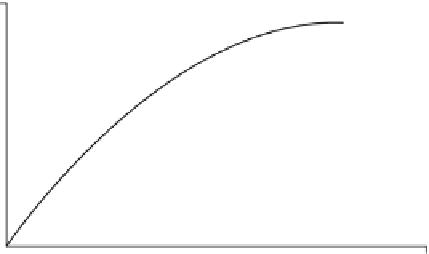Environmental Engineering Reference
In-Depth Information
3.5
3.0
2.5
2.0
1.5
1.0
0.5
0
0
0.05
0.10
0.15
0.20
0.25
y (m)
FIGURE 3.5
Velocity in x-direction as a function of the liquid height y.
Boundary conditions: y = H, and then
τ
y
= 0 and thus
τ
y
=
d
p
d
p
dx
H
dx
y
−
Now, as the liquid is Newtonian and given the boundary condition y = 0, v
x
=0
s
−1
(no slip condition at the bottom of the duct), it follows that
m
1
2
d
p
dx
y
2
+
1
d
p
dx
Hy
v
x
=
−
η
η
s
−1
].
A sketch of the velocity profile in y-direction is given in Figure 3.5.
Check whether the units of the right-hand side terms result in [m
CHAPTER SUMMARY AND STUDY GUIDE
This chapter deals with the formulation of mass, species, energy, and momentum bal-
ances. Setting up these equations for closed and open-flow systems and simplifying
them as much as possible are a prerequisite for understanding any bioenergy conver-
sion system.
KEY CONCEPTS
Systems: open and closed
Balances: mass, energy (both nonreaction and reaction systems), and momentum.
Microscopic versus macroscopic balances (differential vs. control volume approach)
Chemical conversion, selectivity, and yield


























Search WWH ::

Custom Search